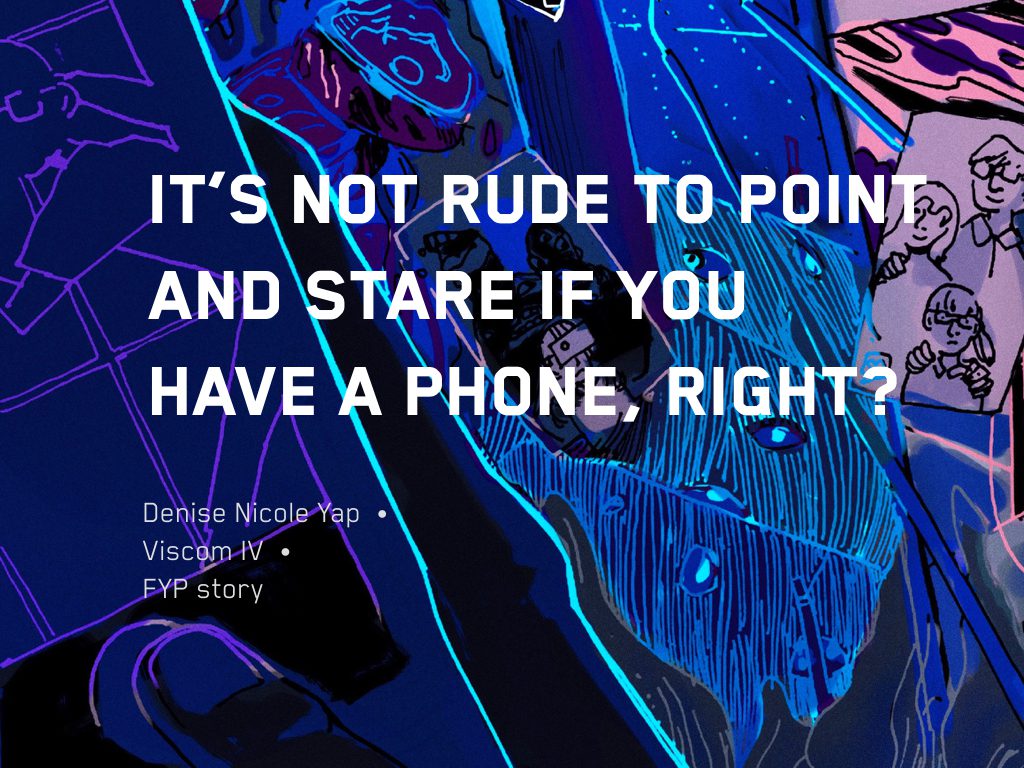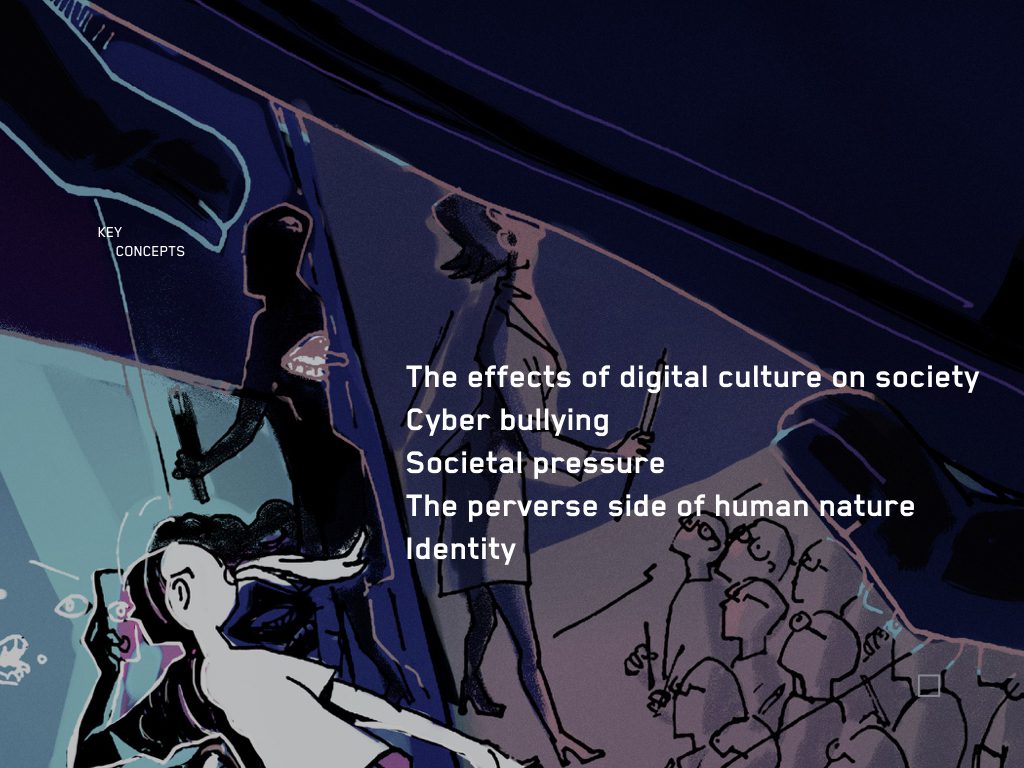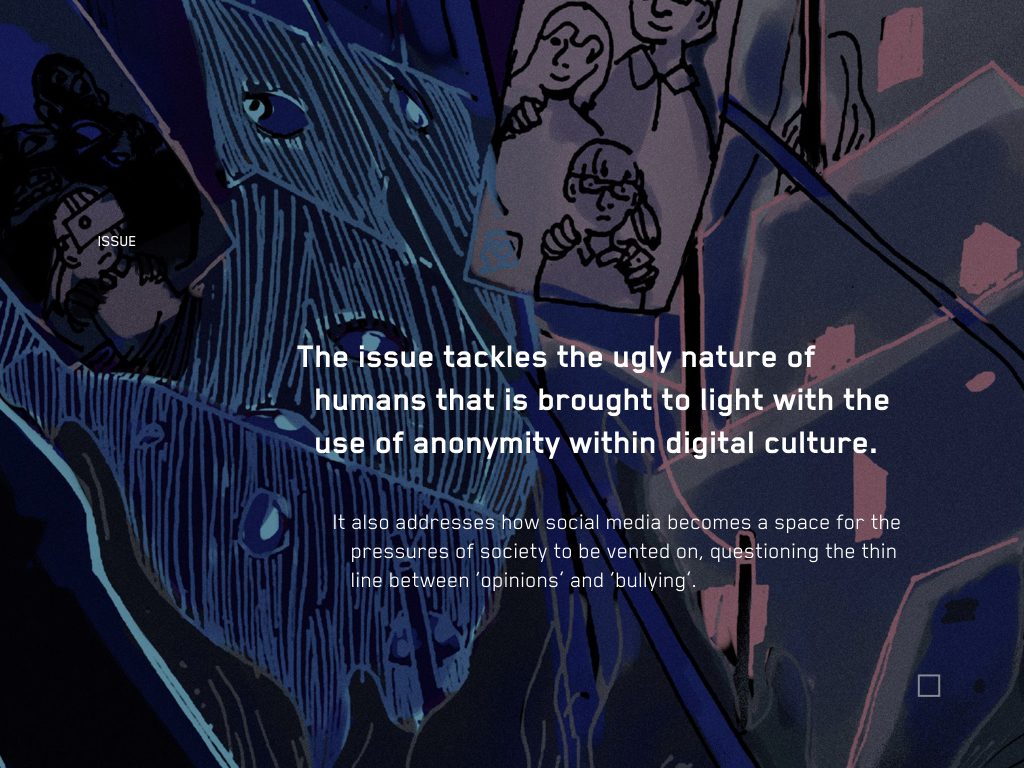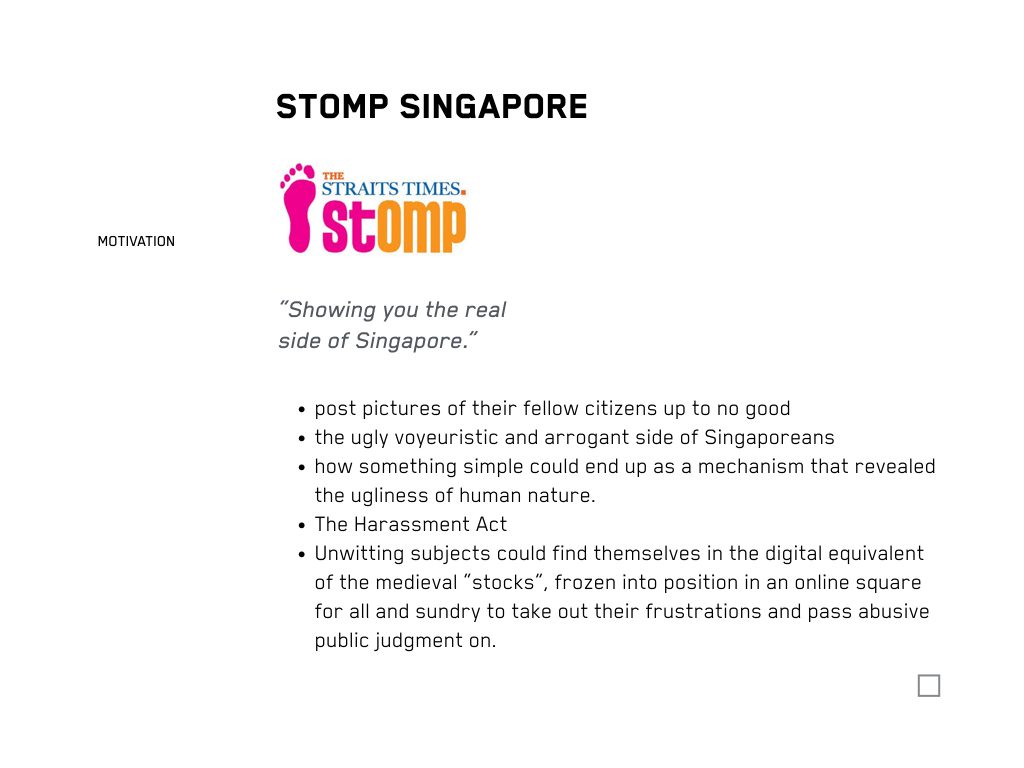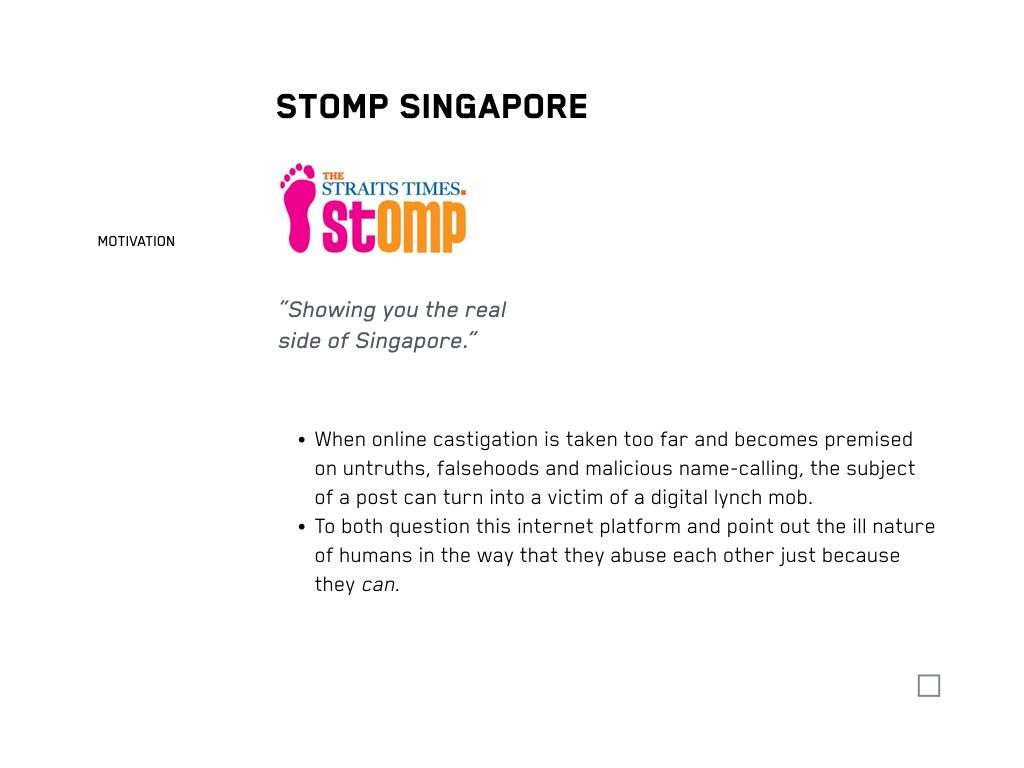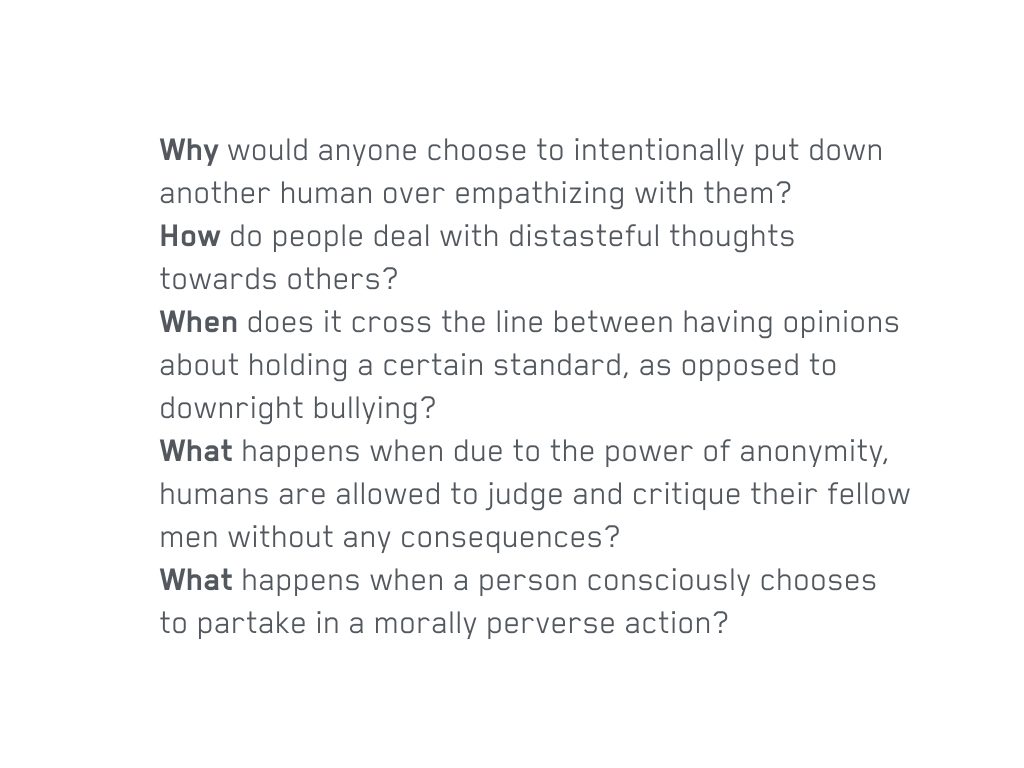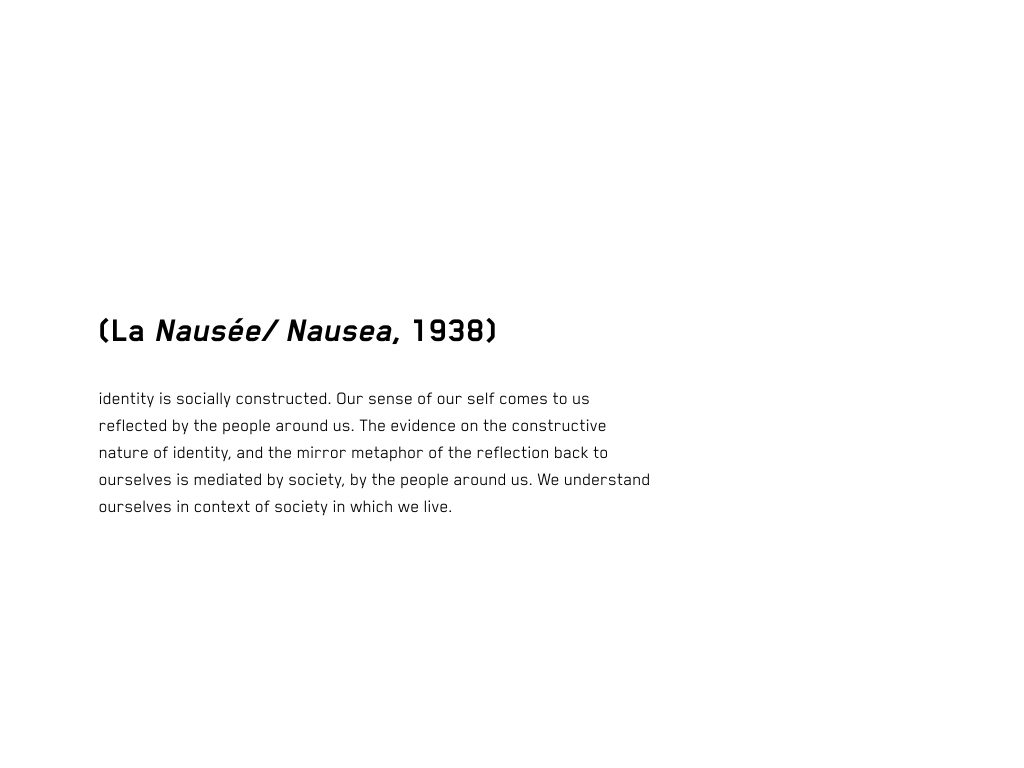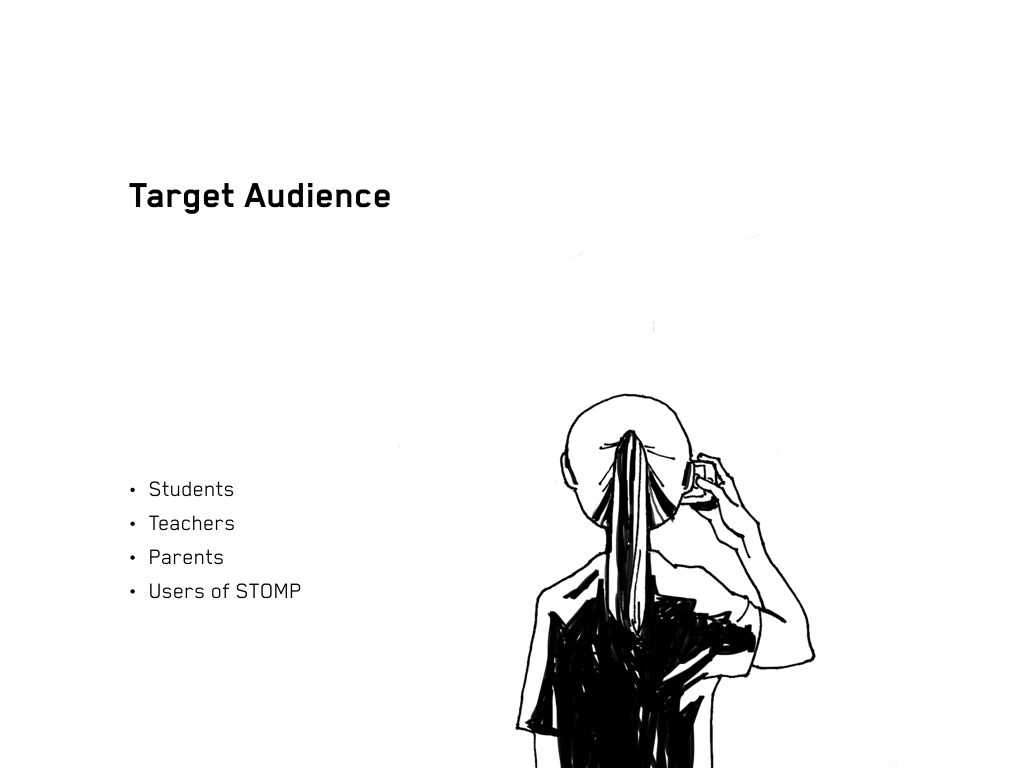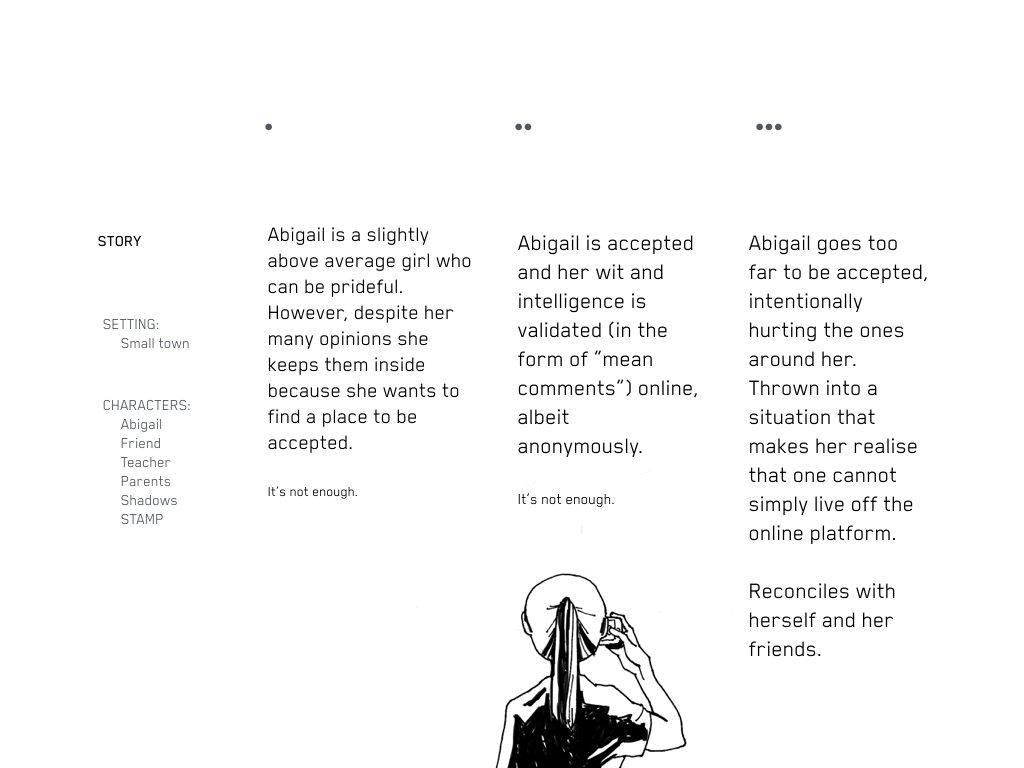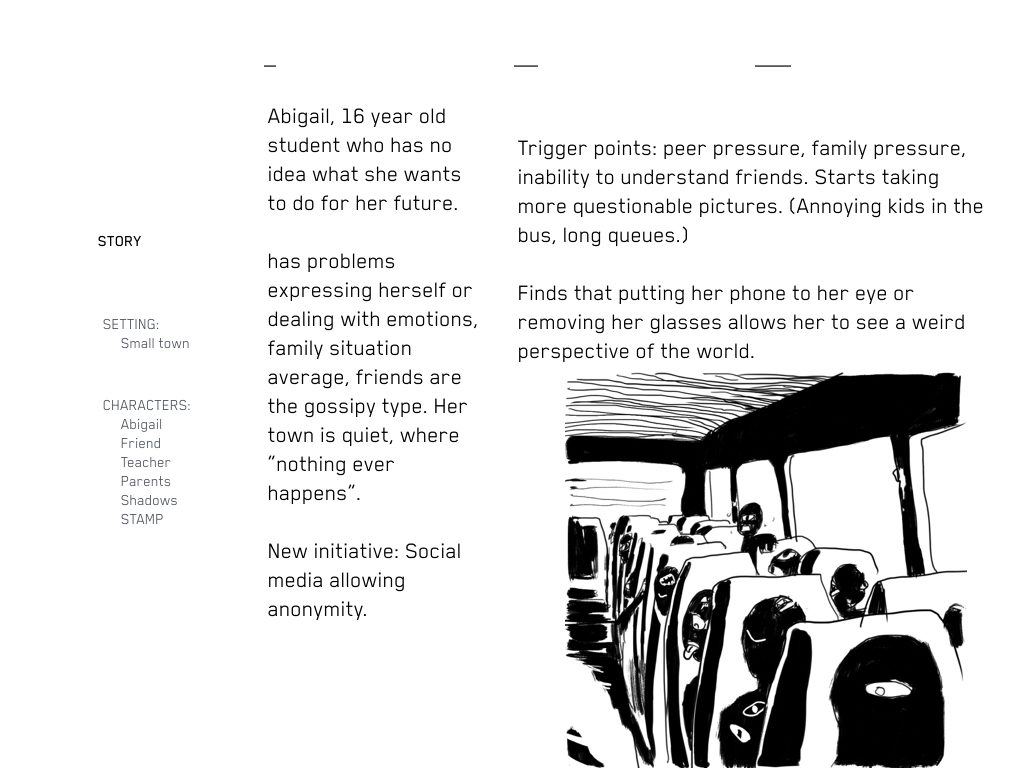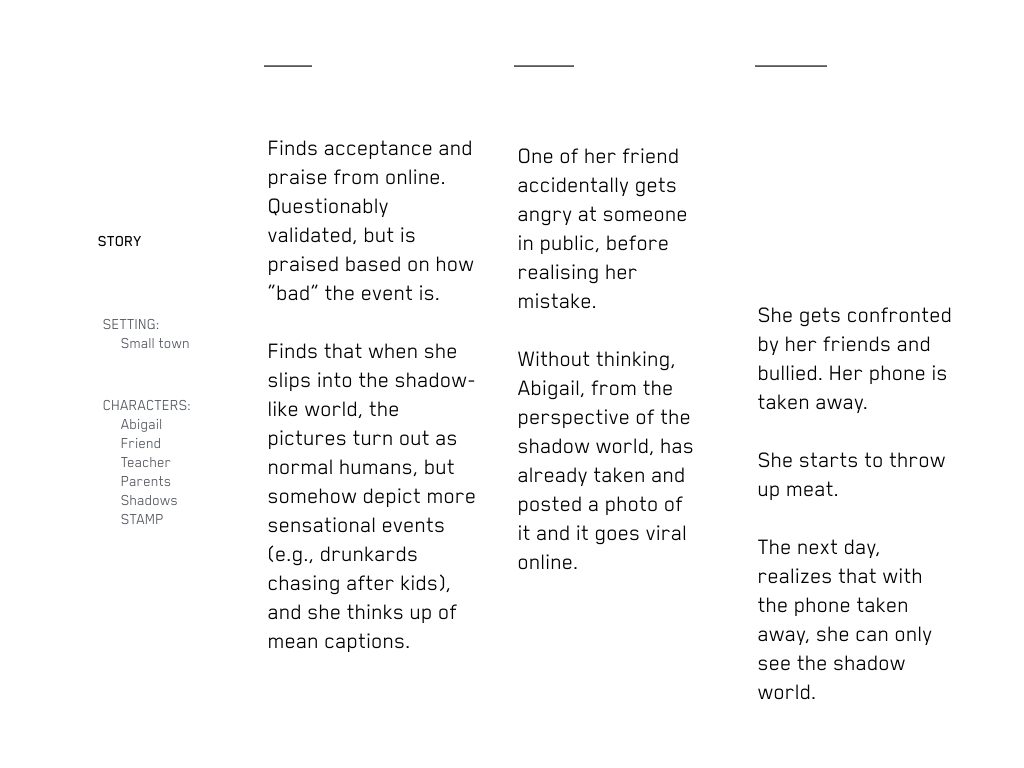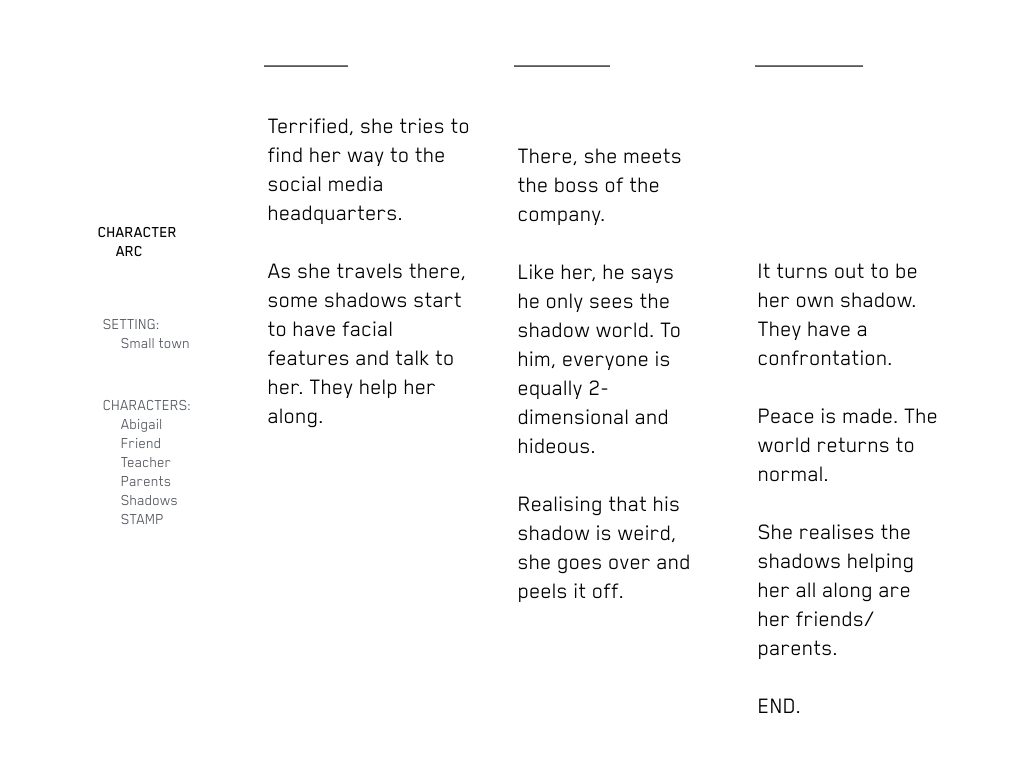Category: Visual Communication 4 – G1
Final Presentation
Research on STOMP, citizen journalism and repression
Some key research:
‘People who live in society have learned how to see themselves in mirrors as they appear to their friends’.
(La Nausée/ Nausea, 1938) – identity is socially constructed. Our sense of our self comes to us reflected by the people around us. The evidence on the constructive nature of identity, and the mirror metaphor of the reflection back to ourselves is mediated by society, by the people around us. We understand ourselves in context of society in which we live.
–
Closing down citizen journalism website Stomp may not solve the inherent issues in the social media era, as similar platforms will sprout up to take its place (“MDA responds to anti-Stomp petition”; last Thursday).
–
Also, the gripe with Stomp is that it promotes “voyeur vigilantism”, where people, through a distorted sense of self-righteousness, indiscriminately post photos of others in compromising situations. Their “victims” lose their privacy and become the subject of heated discussions.
Additionally, the anonymous nature of such sites puts some netizens on guard. While some sites are upfront about the people running them, others are not.
Key words: anonymity, self-righteousness, vouyeuristic.
Brainstorming ideas
Portfolio: Spices
Concept:
Seasonings are not just additions to food to give it extra flavour, they are a necessary part of dishes that changes and affects the chemical make up in the recipe of cooking. To this, I see seasoning and illustration as similar to each other, meant to bring something to the next level. Be it for the eyes, for the hands or for the mind; to me, illustration, design and art are an essential part of our everyday diet even without us noticing.
Design Statement
Quoting Bruno Munari, design is where an “object… has form consistent with it’s use… whether individual parts are logically fitted together.” This is what Visual Communication is to me. Despite coming from an arts background, I take a rational and logical approach to design; believing that because the message/idea demands a certain design, such an aesthetic solution is produced. At the same time, successful Visual Communication works are intentionally crafted in a creative manner that brings satisfaction and harmony to the consumer/client/viewer. It begs the conceptualisation of ideas which allow for new interactions and experiences. It is therefore a question of coherence, of planning and intuition, of imagination and solution.
To me, good design is design that allows life to occur smoothly and unobtrusively. It is about an experience that can better a person’s day-to-day life. In this way, I take a humanistic approach when designing. It is not about creating design so fantastic that people can no longer identify with, but it is about making things human. Even when tackling any kind of brief, my heart is always reaching out for the people. As such, I am concerned with social issues, especially those that trouble our generation of today. Whether it be a uniquely Singapore issue, a topic on digital culture or the mental state of one’s mind, these are contemporary concerns that I am passionate about. While there always lingers the question on whether design can solve problems, I believe that if one can, one should draw awareness to a certain issue. Educating and informing people about the problem can be the first step to realising the need for change, followed by action. I hope to use design to raise awareness as well as suggest solutions that can be small steps towards a larger movement.




